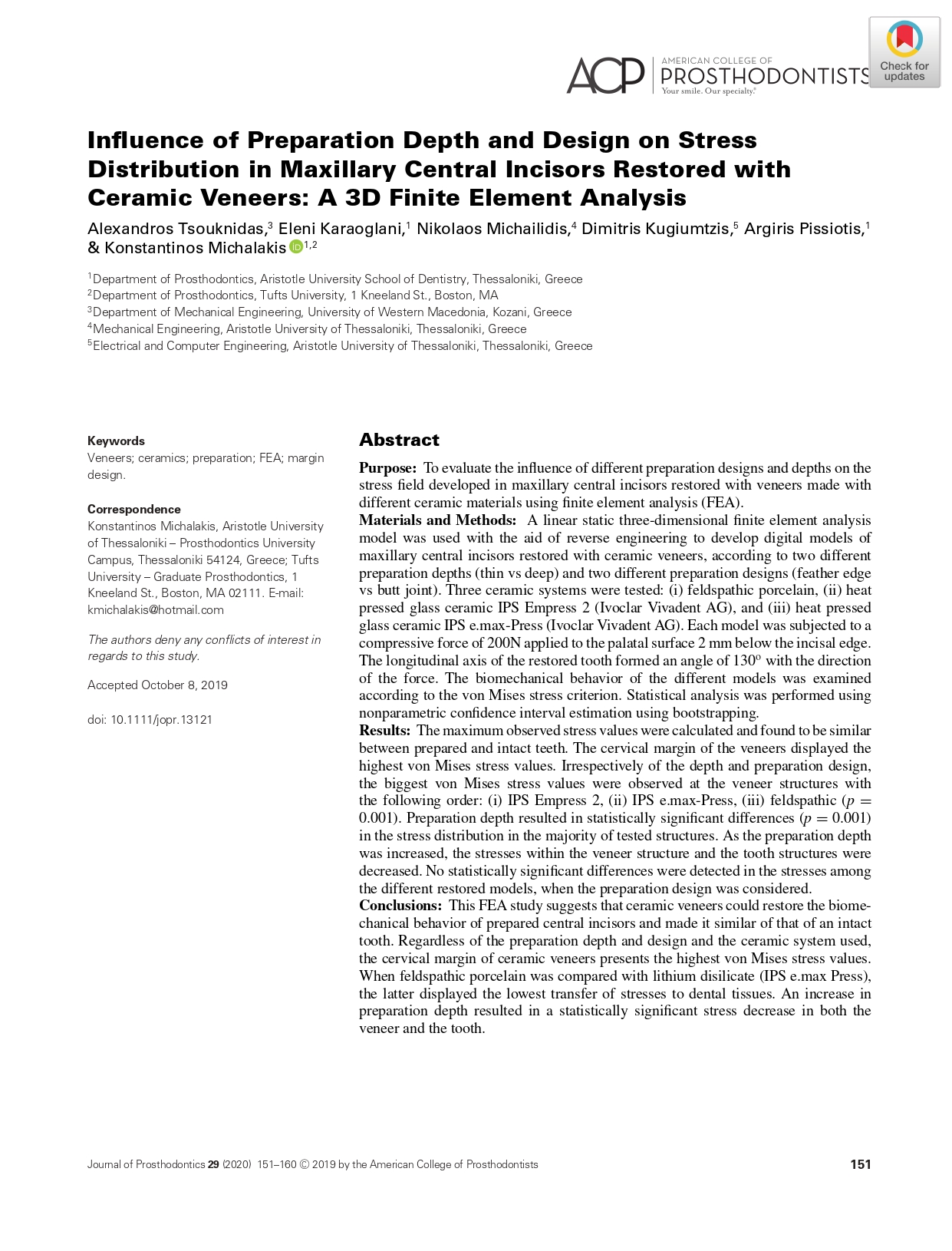Τitle
Influence of Preparation Depth and Design on Stress Distribution in Maxillary Central Incisors Restored with Ceramic Veneers: A 3D Finite Element Analysis
Influence of Preparation Depth and Design on Stress Distribution in Maxillary Central Incisors Restored with Ceramic Veneers: A 3D Finite Element Analysis
Journal of Prosthodontics, 29 (2), pp. 151-160
Purpose: To evaluate the influence of different preparation designs and depths on the stress field developed in maxillary central incisors restored with veneers made with different ceramic materials using finite element analysis (FEA).
Materials and methods: A linear static three-dimensional finite element analysis model was used with the aid of reverse engineering to develop digital models of maxillary central incisors restored with ceramic veneers, according to two different preparation depths (thin vs deep) and two different preparation designs (feather edge vs butt joint). Three ceramic systems were tested: (i) feldspathic porcelain, (ii) heat pressed glass ceramic IPS Empress 2 (Ivoclar Vivadent AG), and (iii) heat pressed glass ceramic IPS e.max-Press (Ivoclar Vivadent AG). Each model was subjected to a compressive force of 200N applied to the palatal surface 2 mm below the incisal edge. The longitudinal axis of the restored tooth formed an angle of 130o with the direction of the force. The biomechanical behavior of the different models was examined according to the von Mises stress criterion. Statistical analysis was performed using nonparametric confidence interval estimation using bootstrapping.
Results: The maximum observed stress values were calculated and found to be similar between prepared and intact teeth. The cervical margin of the veneers displayed the highest von Mises stress values. Irrespectively of the depth and preparation design, the biggest von Mises stress values were observed at the veneer structures with the following order: (i) IPS Empress 2, (ii) IPS e.max-Press, (iii) feldspathic (p = 0.001). Preparation depth resulted in statistically significant differences (p = 0.001) in the stress distribution in the majority of tested structures. As the preparation depth was increased, the stresses within the veneer structure and the tooth structures were decreased. No statistically significant differences were detected in the stresses among the different restored models, when the preparation design was considered.
Conclusions: This FEA study suggests that ceramic veneers could restore the biomechanical behavior of prepared central incisors and made it similar of that of an intact tooth. Regardless of the preparation depth and design and the ceramic system used, the cervical margin of ceramic veneers presents the highest von Mises stress values. When feldspathic porcelain was compared with lithium disilicate (IPS e.max Press), the latter displayed the lowest transfer of stresses to dental tissues. An increase in preparation depth resulted in a statistically significant stress decrease in both the veneer and the tooth.
